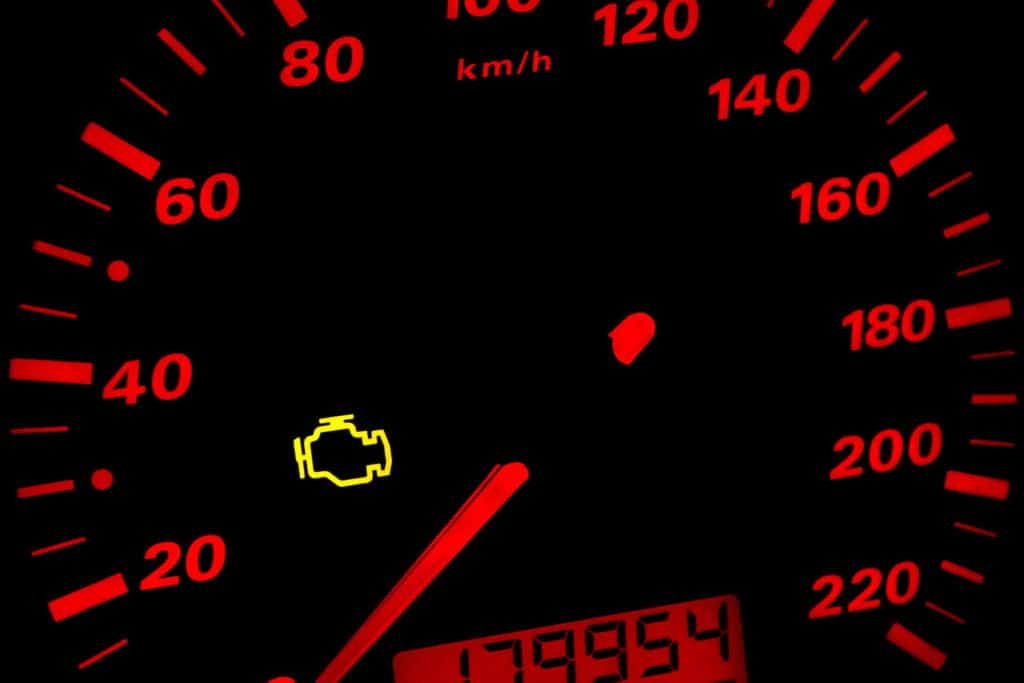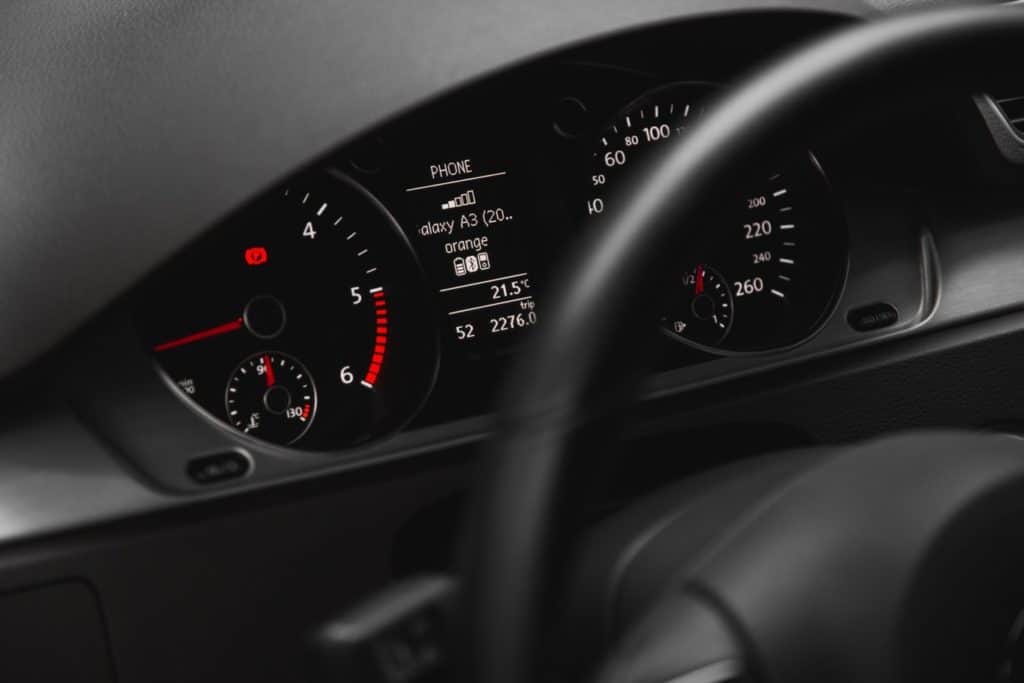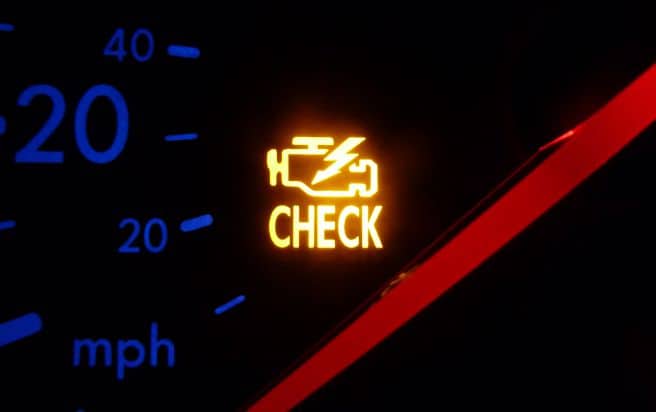Let’s be honest, we have all ignored our check engine light flashing then goes off whenever we have been in a rush to get somewhere or just had something else which was important to do. We all keep thinking that we will deal with it later when we get home or cross the mechanic’s shop on the way, but we forget most of the time.
This seemingly simple occurrence should not be ignored if your check engine light constantly keeps blinking on and off as this might indicate that something is seriously wrong, and it is no time to joke around.
The main reasons your check engine light could be going berserk:
- Broken wires
- Loose vacuum hoses
- Torn vacuum hoses
- Loose electrical connections
- Engine mechanical problems
- Faulty crankshaft/camshaft sensor
- Exhaust emission problems
- Boost/overcharging problems
- Faulty engine sensors (coolant, air temperature, exhaust temperature sensor, etc.)
- Faulty spark plugs or coils
Table of Contents
What the check engine light does

To fully understand the problem at hand, one must understand the exact function and purpose of the check engine light. The check engine light is an essential component of your car’s onboard diagnostic module (ECM), also known as your car’s computer.
In current day vehicles, the ECM controls almost all the major electronic or electrical systems and simultaneously scans for out-of-range operating parameters, reported by various sensors and actuators.
To put things in perspective, a sensor or actuator might detect insufficient fuel injection, a misfire, unusual voltage to the secondary ignition system, unusual operation of the fuel pump, or any other possible condition that might be affecting the engine’s performance. Your car’s computer aims to correct the issue or wait for a number for cycles.
When the computer calculates that it cannot correct the issue, and the issue does not resolve itself either, the onboard system will store and compute a diagnostic trouble code (DTC) in its memory. This leads to the check engine light blinking rapidly.
What a check engine light flashing then goes off could imply

To understand the severity of the problem at hand, you must pay attention to the pattern or repetitiveness of the check engine light carefully.
Intermittent flashing
If your check engine light flashes intermittently or comes and goes at no particular interval, it indicates that your problem is also coming and going at the same rate. This is called intermittent or soft failure and can lead to the light flashing, then stop flashing, and then start flashing again.
This indicates that the issue arises only in certain situations such as when the loose connector that keeps connecting and disconnecting when the car travels over a bump or uneven roads, couses the light to flash on and off for periods at a time.
Continuous flashing
If your check engine light is flashing continuously, it indicates that your car might be encountering a serious problem that will lead to severe damage if left neglected. This usually originates in a misfire that allows the fuel to pass into the exhaust manifold and down to the catalytic converter where the high temperatures ignite the fuel.
If left neglected, this situation could damage the catalytic converter or exhaust system. This is a sign for you to get your car checked out immediately to make it easier on your pockets and car later.
Continuous illumination
If your check engine light stays illuminated for a long period of time, it indicates that a hard failure is present or has occurred. For example, a failed mass air flow sensor will stay out of its usual operating parameters and lead to the check engine light remaining on until the sensor is cleaned or replaced.
Diagnosing the issue with check engine codes
Now this part could get a little technical and would require you to use a diagnostic scanner to comprehend and understand the check engine light codes.

Note: Automobile manufacturers have standardized the check engine light codes across all 1996 and newer models, meaning that a particular code will point towards the same type of problem irrespective of what make and model you own.
Diagnostic codes consist of alphanumeric values, and the configuration of a DTC starts with a single letter, followed by four digits. Whenever the computer detects an issue, it will store a DTC in its memory and turn the check engine light on.
- The first letter denotes and signifies the type of code it is. It could be a ‘P’ (powertrain), ‘C’ (chassis), ‘U’ (wiring-network), or ‘B’ (body). You should be concerned about ‘P’ codes since they relate to the check engine light.
- After the first letter, you will see a ‘0’ or ‘1’ number; ‘0’ means that you face a generic OBD code found in most vehicles. A ‘1’ means that the code is specific to your car’s make and model, also known as the manufacturer-specific code.
- The next or third digit will indicate in which system the computer has detected the issue. A ‘1’, for instance, means that the issue originated in the fuel and air metering system.
- Lastly, the last two digits indicate and specify the particular component or circuit involved and the nature of the issue you’re facing. For instance, a ‘02’ means that the computer has detected low input in the mass air-flow sensor circuit.
For this process, you need to invest in a diagnostic scanner, which you can find online for excellent prices or even at the local mechanic’s store. Without a scanner, you would need to acquire the help of someone who has one and can help you out.
Conclusion
Most car owners usually neglect a seemingly harmless blinking of the check engine light because most individuals do not realize what it could be indicating. After reading this article, we hope that you understand the severity of a flashing check engine light, what each pattern of flashing means, and how to diagnose it with the help of a diagnostic scanner or tool.
It does get a bit technical to diagnose the issue, but thanks to technology, a diagnostic tool can provide you with a basic description of the problem at hand so you will not be left scratching your head for answers.
